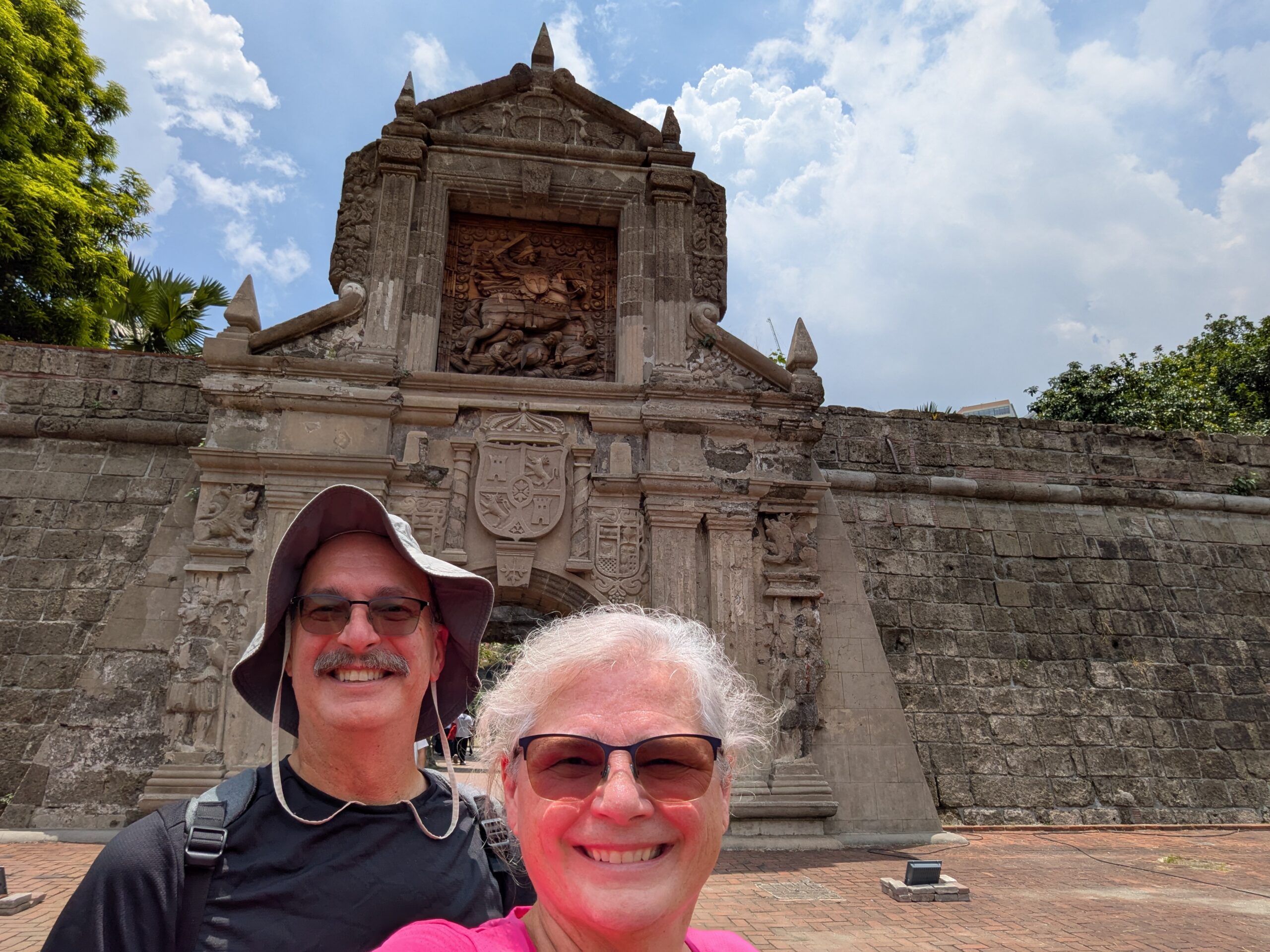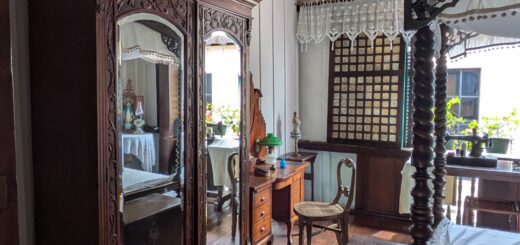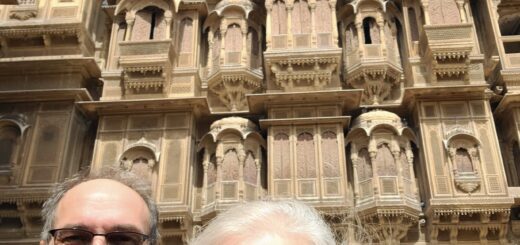Manila, Philippines #39

May 8,
Today it was clearer outside some, so we got around having our Javas and breakfast with our “last ofs”: oatmeal, bread, yogurt and juice. We packed up our stuff and left our place by 1140. By 1145, we were checked out. The place is keeping our bags for us as we go about.
We basically have 5 hours to see some sights we haven’t been able to see due to weather conditions. Jeff E-hailed a Grab taxi. We arrived at the first place, Fort Santiago. It only cost us 75 PHP each ($1.35). The fort is in the middle of Manila at the opening of the Pasig River into Manila Bay. It was originally:
A wooden fort of Rajah Soliman, taken over by the Spanish in 1571. The wooden structure was burned down by a Chinese pirate in 1574. Then replaced in 1590-1593 of “Guadalupe Volcanic Tuff”- which is adobe, according to a placard. The fort has been a citadel of four foreign powers: Spain 1571-1762, 1764-1898; UK 1762-1764; USA 1898-1946; and Japan 1942-1945, during WWII. The fort became a National Shrine in 1951 and a National Cultural Treasure in 2014… all according to placards. The last major restorations were 1979 and 1983, including the moat, barracks, and main gate as much of it was destroyed in the 1945 Battle of Manila.
Also of note in Fort Santiago is the Shrine of Jose Rizal which details his life, imprisonment, and execution of in 1896.
Mr. Rizal is a martyr/national hero of the ‘Filipino psyche’, and “his death and sacrifice (have)…inspired and moved Filipinos to understand… there is nobility and greatness in offering one’s life for love of motherland,” from other placards.
Lastly was the Dungeons of Fort Santiago:
Originally the dungeons were a powder magazine in 1599, but due to dampness it became a prison during Spanish colonization and during Japanese occupation. After 1945, bodies of about 600 prisoners were found that the Japanese left to starve and suffocate. The bodies were re-placed into a mass grave marked with a white marble cross, paraphrased from other signs.
Next we went to the Cathedral of Manila. The present building is the eighth Immaculate Conception Cathedral to stand on this site since 1571. The present building is a large stone structure. Inside it’s very airy with a tall, arched, and vaulted ceiling line. The main altar has a statue of Mary, and lots of beautiful stained glass. Again there were many pews – if full would hold hundreds of believers.
Then, still walking about, we went to the Intramuros Museum. The focus here was of the walled inner city. It went onto the history of Manila: Precolonial, with nearly 2,000 people inside the walls; Redefinition 1905-1945, led by Burnham (as in Burnham Park in Baguio), and changing from occupation by government, military, and religious back to residential and into a tourist attraction; Post-War 1946-1965; and Restoration 1966-Today, led by President Ferdinand Marco, Sr. and the creation of the Intramuros Restoration Committee, stabilizing ruined walls, restoring six gates, and the Fort as well as many churches/cathedrals.
Then we went to San Agustin Church, which is a UNESCO World Heritage Site. It was not destroyed in WWII, amazingly. It boasts as the oldest stone church of the Philippines, planned in 1586, and completed in 1607. The church was being set up for a wedding, so we could not go inside, but the doors were open to see inside. It appeared large and beautiful as far as we could see.
Next we walked to Baluarte de San Diego. We had an entrance fee here of 75 PHP each. It was essentially a tower and became integrated with the walls of the Intramuros. It’s lay out is round and was interesting to see, but no one is allowed inside. From this location, we saw more of the walls and the area that would have be moated, but was filled in and is now a golf course, built during American occupation. Now we needed a bit of refueling, stopped at Buon Jairni Cafe- splitting a ham cheese mini sandwich; lemon-ginger and honey juice, and a mango graham smoothie. It was 199 PHP, which is $3.60.
Lastly we went to the National Museum of Fine Arts – it’s free. The museum is in the Old Legislative Building of the Philippines. I thought this was cool to be incorporated in and to preserve an old historical building! There were lots of exhibits and art pieces here. One Filipino artist/painter stood out – Fernando C. Amorsolo, being one of the most admired and was very prolific; and one Filipino sculptor – Guillermo Tolentino; and one Filipino carver -Jose P. Alcantara, beautiful wood reliefs and statues. We spent two hours here and could have spent way more.
We E-hailed a Grab taxi to get back to our luggage at the condo. Jeff talked our Grab taxi driver into taking us to the airport also for additional fare – it cost us 800 PHP total ($14.45).
At 1804, we were at the airport; at 1813, we were through security, and by 1823 in a lounge. We ate and used the shower here then to a second lounge – first one was supposed to be the only one with a shower. The second lounge had worse food selection, but had wine and rum… and a shower that was not mentioned in the description. Also there was not great AC in this last one.
At 2045 arrived at gate #105. There’s at least 130+ gates here in Manila airport. Our plane had been delayed 10 minutes, which we knew before arriving at the airport. We boarded the flight at 2140, which was even later than we were supposed to be delayed. It is a relatively empty plane, and it is raining outside. We had the announcement to not buckle seat-belts until after fueling is done. This is something new for the last year(?) of flying. The crew just relayed we are waiting for an important document. What? And really? The plane backed up at 2235! We were one hour late. Taxied a wee-bit bit and then stopped! For every plane taking off, two were landing, and we were fourth in line to take off! Finally at 2319 we took off!!!










